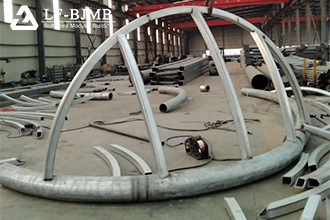
welding
Inspection of welds is a critical aspect of ensuring the quality and integrity of welded joints in various industries, including construction, manufacturing, and infrastructure. Different methods are employed to inspect welds, each with its advantages and limitations. Here are some common methods of inspecting welds:
Visual Inspection (VT):
Method: This is the most straightforward method, involving a visual examination of the weld and its surrounding areas.
Application: Visual inspection is often the first step in weld inspection and is effective for detecting surface discontinuities, such as cracks, porosity, incomplete fusion, and other visible defects.
Tools: Inspection is usually performed using the naked eye, but magnifying glasses, mirrors, and other visual aids may be used.
Radiographic Testing (RT):
Method: X-rays or gamma rays are passed through the weld, and the resulting image on a film or digital detector is analyzed for internal defects.
Application: Radiographic testing is effective for detecting internal flaws like porosity, inclusions, lack of fusion, and other volumetric defects.
Tools: X-ray machines or gamma-ray sources, film or digital detectors, and specialized darkrooms or software for image analysis.
Ultrasonic Testing (UT):
Method: High-frequency sound waves are transmitted through the material, and the reflections are analyzed to detect internal defects.
Application: Ultrasonic testing is used to identify defects such as cracks, lack of fusion, and porosity in both welds and base materials.
Tools: Ultrasonic transducers, couplants (gel or water), and instruments for signal analysis.
Magnetic Particle Testing (MT):
Method: Magnetic fields are applied to the material, and iron particles are applied to reveal surface or near-surface defects.
Application: Magnetic particle testing is effective for detecting surface cracks and other discontinuities in ferromagnetic materials.
Tools: Magnetic yokes, magnetic particles (dry or wet), and inspection equipment.
Liquid Penetrant Testing (PT):
Method: A liquid penetrant is applied to the surface of the weld, and after a specified dwell time, excess penetrant is removed, and a developer is applied to reveal surface defects.
Application: Liquid penetrant testing is used to detect surface cracks, porosity, and other open-surface defects.
Tools: Penetrant materials (visible or fluorescent), cleaners, developers, and inspection equipment.
Eddy Current Testing (ET):
Method: Eddy currents are induced in the material, and changes in the currents are analyzed to identify surface and near-surface defects.
Application: Eddy current testing is often used for detecting cracks, corrosion, and other surface anomalies in conductive materials.
Tools: Eddy current probes, instrumentation for signal analysis.
Infrared Thermography (IRT):
Method: Infrared cameras or sensors detect heat patterns on the surface of the material, revealing variations that may indicate defects.
Application: Infrared thermography is used to detect heat-related issues such as lack of fusion, cracks, and other anomalies.
Tools: Infrared cameras or sensors, and analysis software.
The choice of inspection method depends on factors such as the type of material, the nature of the weld, the desired sensitivity, and the specific requirements of the project or industry. Often, a combination of methods may be used to ensure comprehensive weld inspection. Inspection should be carried out by qualified and certified personnel to ensure accurate and reliable results.











 About Us
About Us 2023-12-25
2023-12-25


